Abstract
The fluorescence of a fermentation culture was studied for its application as an estimator of biomass concentration. The measurement was obtained by irradiating the culture with ultraviolet light (366 nm) through a glass window and detecting fluorescent light at the window surface at 460 nm. It was estimated that over one-half of the fluorescent material was intercellular reduced nicotinamide adenine dinucleotide, with the remainder being reduced nicotinamide adenine dinucleotide phosphate and other unidentified intercellular and extracellular fluorophores. The culture fluorescence was found to be a function of biomass concentration, together with environmental factors, which presumably act at the cellular metabolic level to modify intercellular reduced nicotinamide adenine dinucleotide pools (e.g., dissolved oxygen tension, energy substrate concentration, and inhibitors). When these environmental conditions were controlled, a linear relationship was obtained between the log of the biomass concentration and the log of the fluorescence. Under these conditions, this relationship has considerable potential as a method to provide real-time biomass concentration estimates for process control and optimization since the fluorescence data is obtained on line. When environmental conditions are variable, the fluorescence data may be a sensitive index of overall culture activity because of its dependence on intercellular reduced nicotinamide adenine dinucleotide reserves and metabolic rates. This index may provide information about the period of maximum specific productivity for a specific microbial product.
Full text
PDF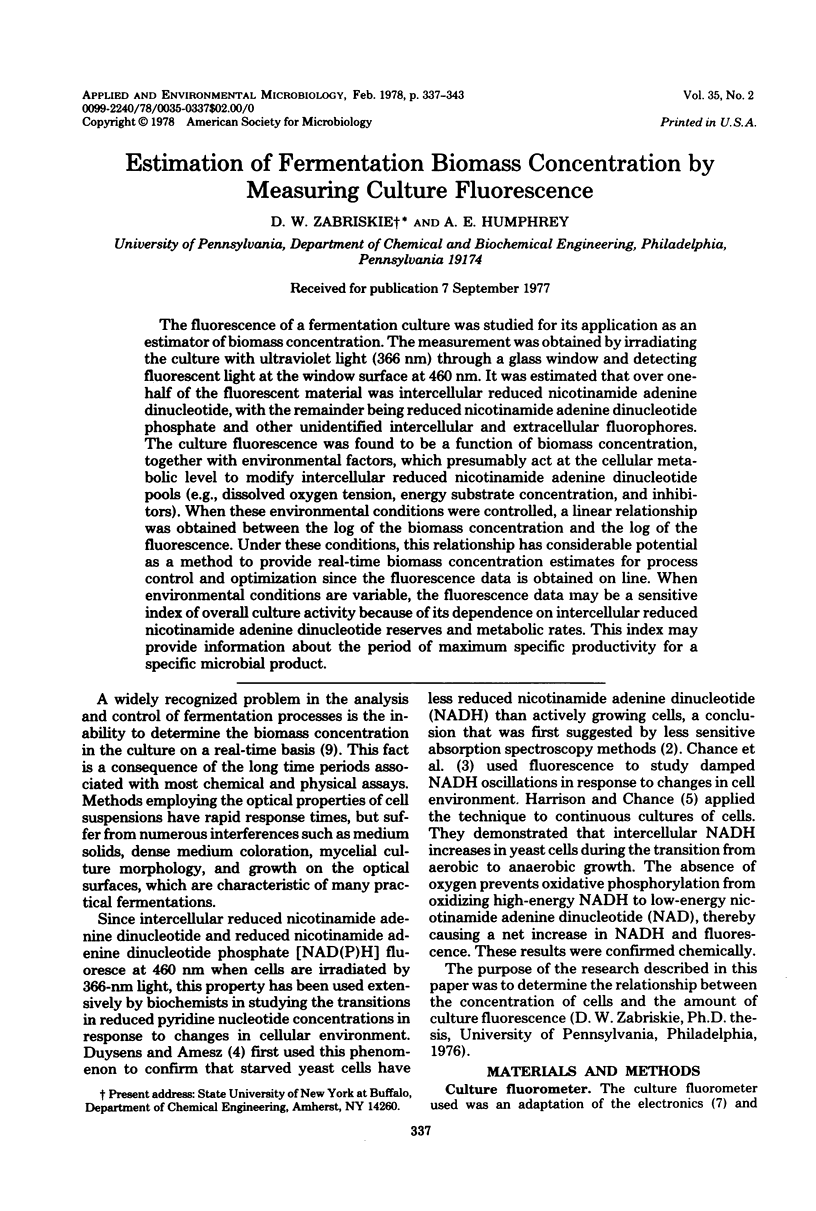
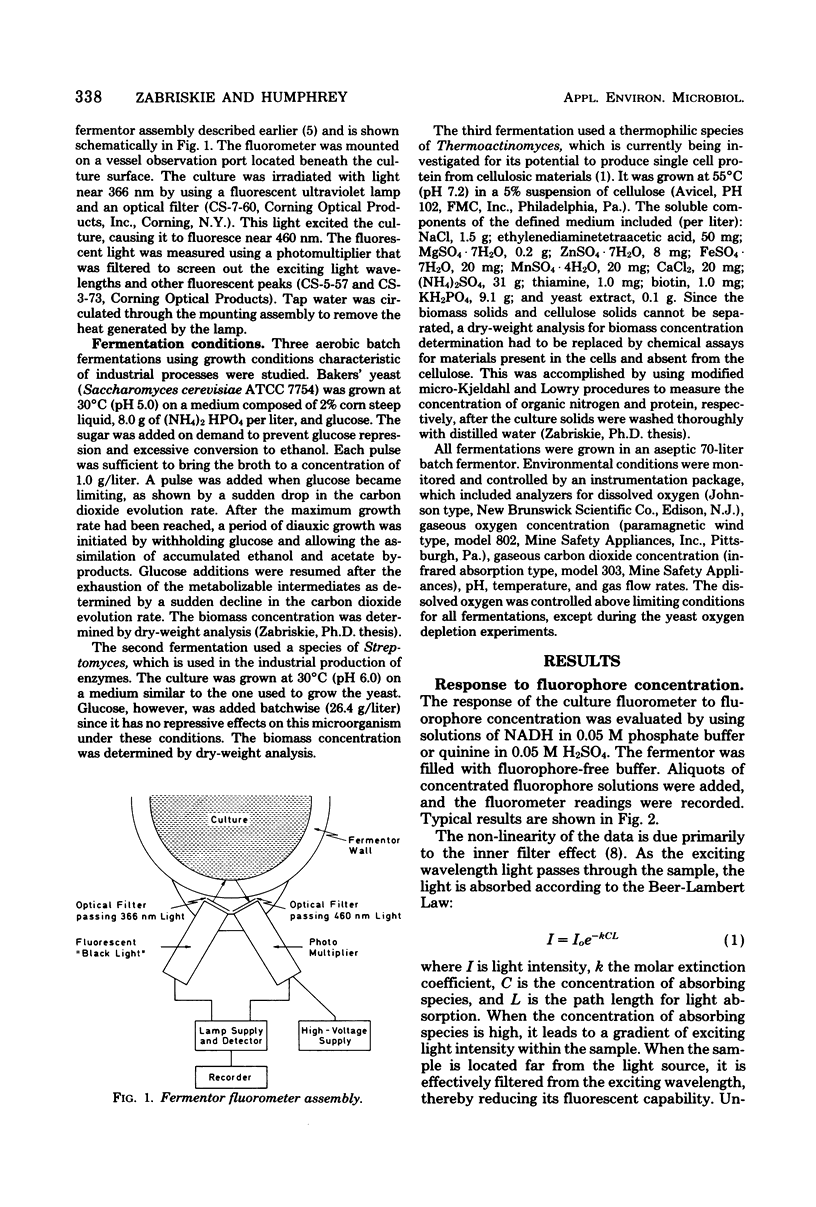

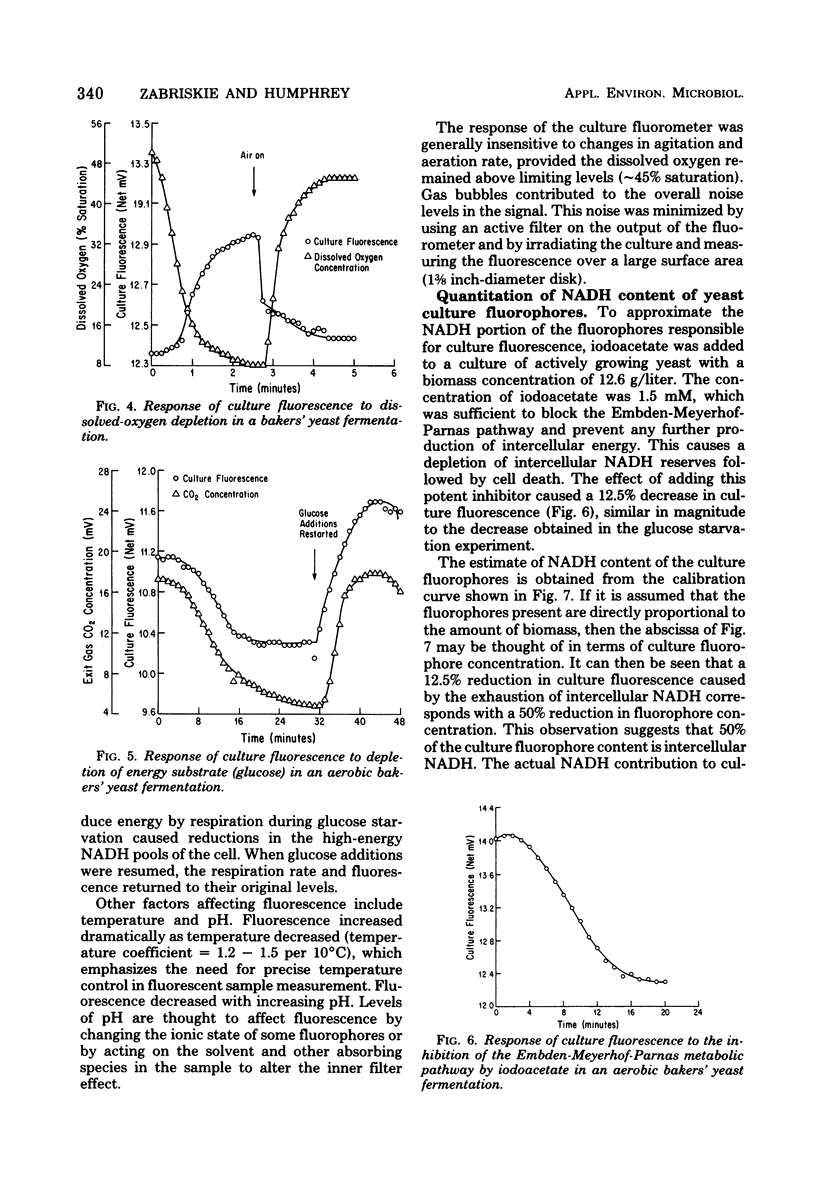
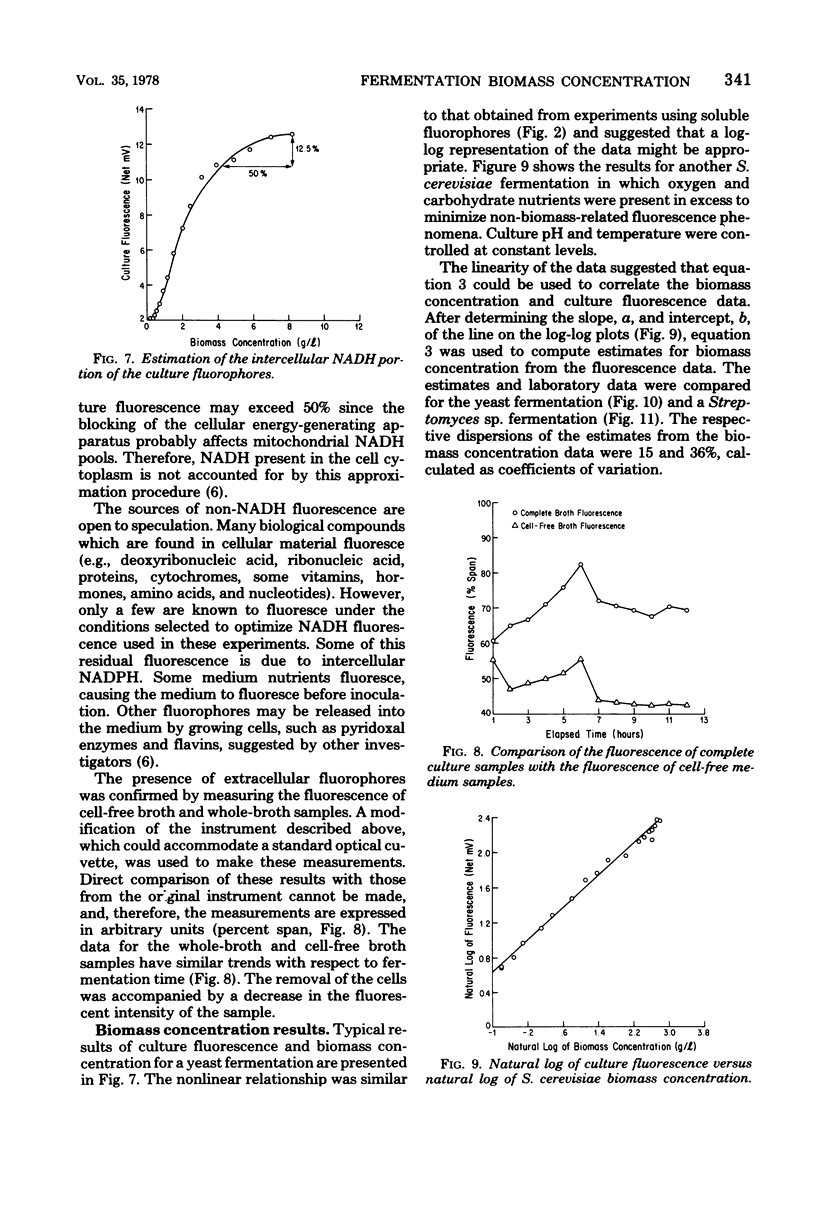
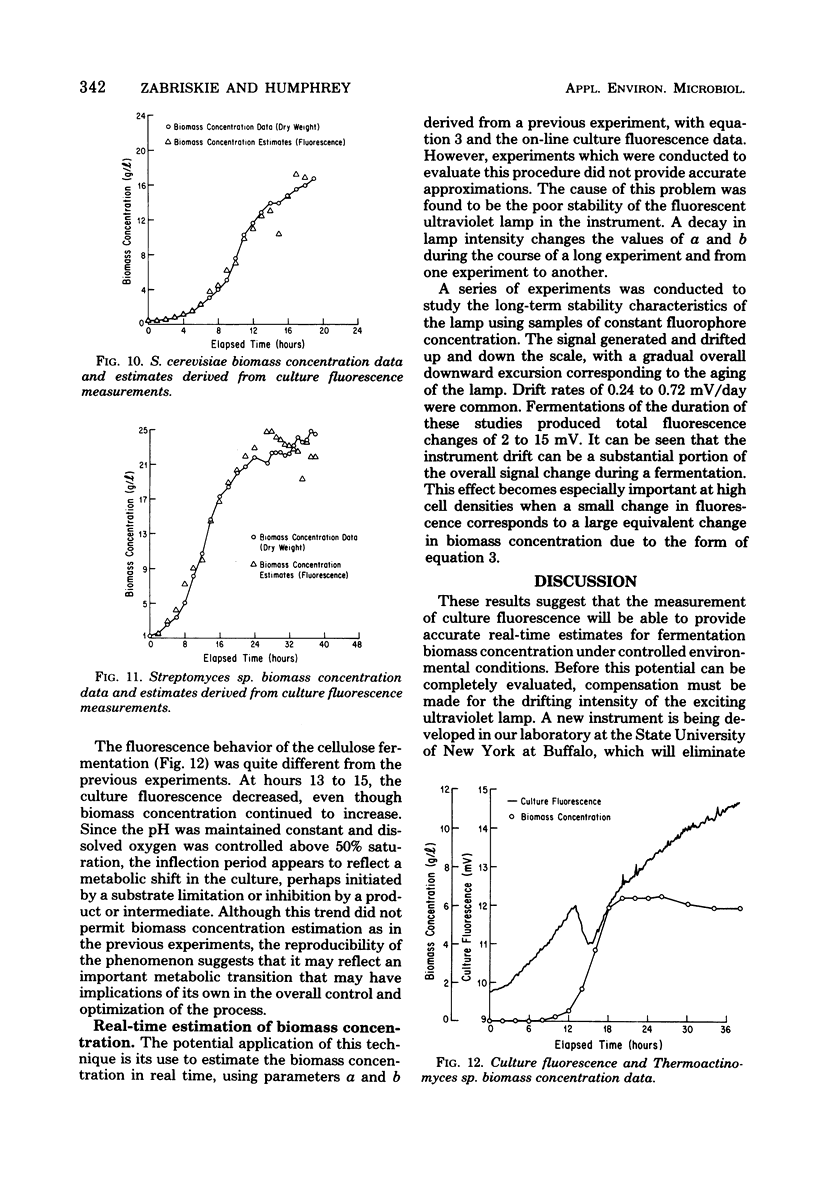
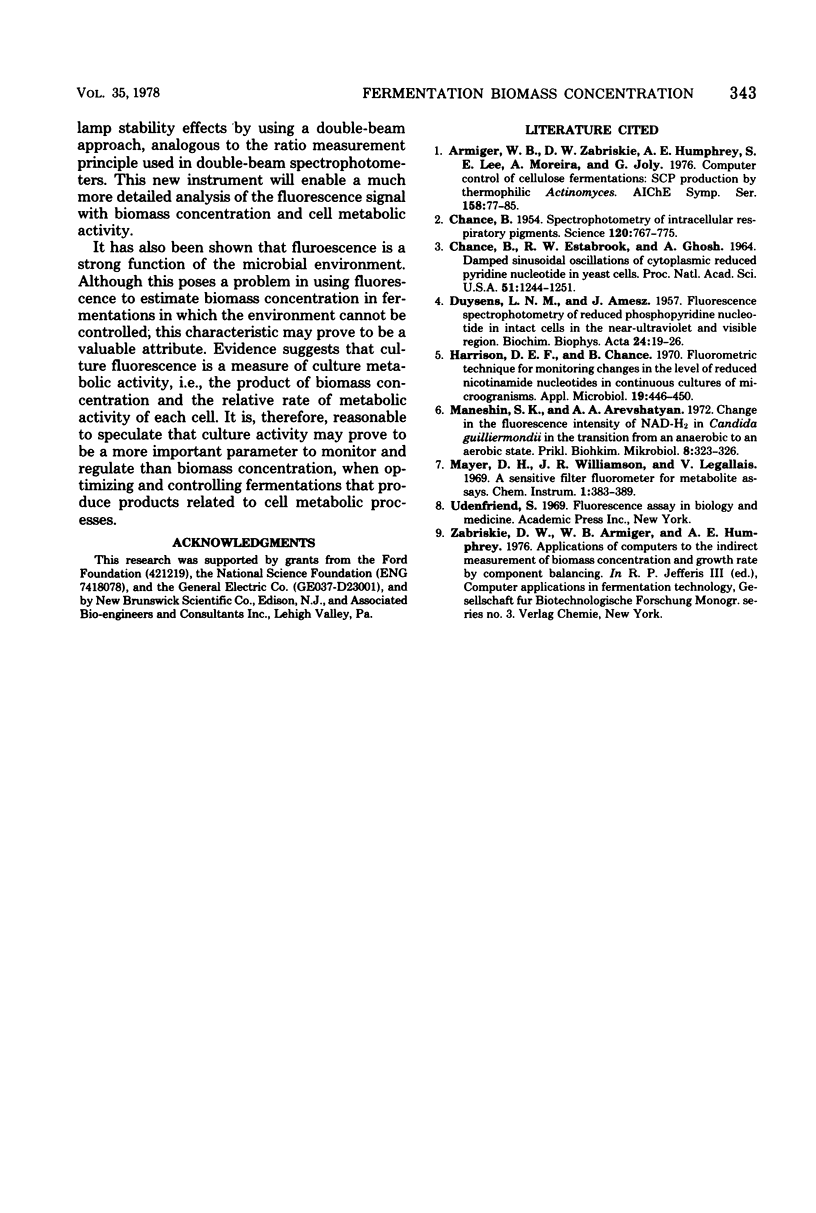
Selected References
These references are in PubMed. This may not be the complete list of references from this article.
- CHANCE B., ESTABROOK R. W., GHOSH A. DAMPED SINUSOIDAL OSCILLATIONS OF CYTOPLASMIC REDUCED PYRIDINE NUCLEOTIDE IN YEAST CELLS. Proc Natl Acad Sci U S A. 1964 Jun;51:1244–1251. doi: 10.1073/pnas.51.6.1244. [DOI] [PMC free article] [PubMed] [Google Scholar]
- CHANCE B. Spectrophotometry of intracellular respiratory pigments. Science. 1954 Nov 12;120(3124):767–775. doi: 10.1126/science.120.3124.767. [DOI] [PubMed] [Google Scholar]
- DUYSENS L. N., AMESZ J. Fluorescence spectrophotometry of reduced phosphopyridine nucleotide in intact cells in the near-ultraviolet and visible region. Biochim Biophys Acta. 1957 Apr;24(1):19–26. doi: 10.1016/0006-3002(57)90141-5. [DOI] [PubMed] [Google Scholar]
- Harrison D. E., Chance B. Fluorimetric technique for monitoring changes in the level of reduced nicotinamide nucleotides in continuous cultures of microorganisms. Appl Microbiol. 1970 Mar;19(3):446–450. doi: 10.1128/am.19.3.446-450.1970. [DOI] [PMC free article] [PubMed] [Google Scholar]
- Maneshin S. K., Arevshatian A. A. Izmenenie intensivnosti fluorestsentsii NAD-H 2 'v drozhzhakh Candida guilliermondii pri perekhode iz anaérobnogo v aérobnoe sostoianie. Prikl Biokhim Mikrobiol. 1972 May-Jun;8(3):323–326. [PubMed] [Google Scholar]


